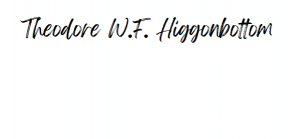What Level of Detail Should I Included in My SOPs?
March 21, 2025
Dear Mr. Higgonbottom,
What level of detail do you include in SOPs? Should they have detailed step-by-step instructions, or just high-level overviews of a job?
Dear SOP Writer:
Creating Standard Operating Procedures (SOPs) may sound simple but can be daunting! It’s not just about listing daily routines; it’s about embedding a culture of excellence and reliability throughout the organization. A carefully crafted SOP can ensure that no matter who performs a task—from new hires to old hands—it’s done consistently, safely, and to a high standard.
To answer your question, the level of detail in SOPs depends on their purpose, the audience, and the complexity of the tasks. Let’s break this down to help you determine the right amount of detail you will need.
1. Purpose of the SOP
Who will be this document’s user(s)? From new hires and trainees with little-to-no experience to seasoned professionals, SOPs ensure consistency of task performance and compliance with company policies and government regulations.
- Training Document: To support learning, include more context and detailed explanations. For complex tasks, consider adding examples or graphics for each step.
- Reference for Compliance: Every step of the procedure must be detailed to demonstrate full compliance with local, state, and federal regulations. Any documentation required should be listed, with references to examples and/or templates, if any. Specific criteria and relevant standards should also be referenced for easy access by the user of the SOP.
- Quick Reference Guide: Use concise instructions, possibly in a checklist format, focusing only on the key steps.
2. Knowledge Level of the SOP User?
- For New Employees or Untrained Users: Include detailed, step-by-step instructions. Include explanations of terms and procedures. Assume little to no prior knowledge.
- For Experienced Employees: Summarize steps where possible, focusing on critical aspects or recent changes to existing procedures.
- For Specialists or Technicians: Use technical language and acronyms familiar to the audience, but still provide clear steps and safety protocols.
3. Complexity of the Task
- Simple, Routine Tasks: Include only the essential steps. These tasks usually don’t require in-depth detail unless safety or compliance is a factor.
- Complex or High-Risk Tasks: Provide comprehensive, step-by-step instructions with extra details on safety measures, troubleshooting tips, and any variables that could affect the outcome.
4. Frequency of the Procedure
- Infrequent Procedures: Provide more detail, as users may not remember specifics between uses.
- Frequent Procedures: Use summary steps, focusing on any changes or critical points that users need to keep in mind.
5. Use of Visual Aids
- Flowcharts or Diagrams: Visual representations of processes can reduce the need for lengthy descriptions.
- Screenshots or Pictures: These can be useful in illustrating specific steps, especially for computer-based tasks or where visual confirmation is necessary.
- Tables or Checklists: These can summarize repetitive steps and streamline the document. For example, an emergency evacuation procedure checklist would itemize the individual steps, a brief description of the action required, and the person(s) responsible.
6. Safety and Compliance
- If safety is a concern, detail every relevant safety protocol, precaution, and emergency procedure.
- For compliance, ensure that specific regulatory requirements are clearly stated, including references to applicable laws, codes, or standards.
In summary, aim for clarity, consistency, and precision in your language. The right level of detail should enable any user of the SOP to complete the task correctly, safely, and in compliance with regulations without overwhelming them with unnecessary information.
Cheers!
































